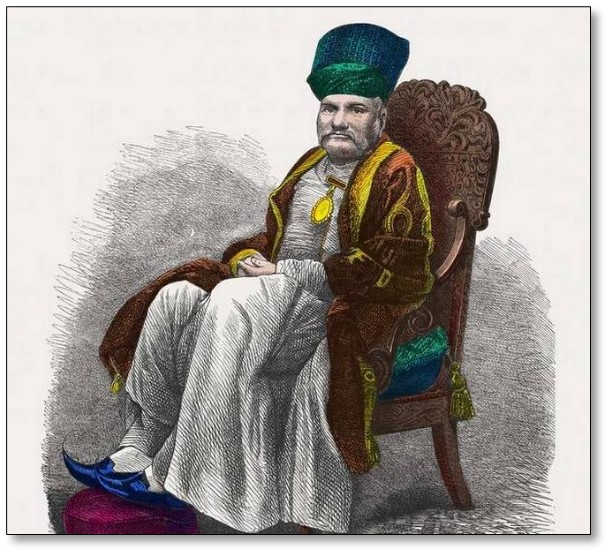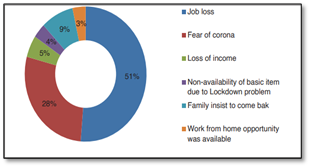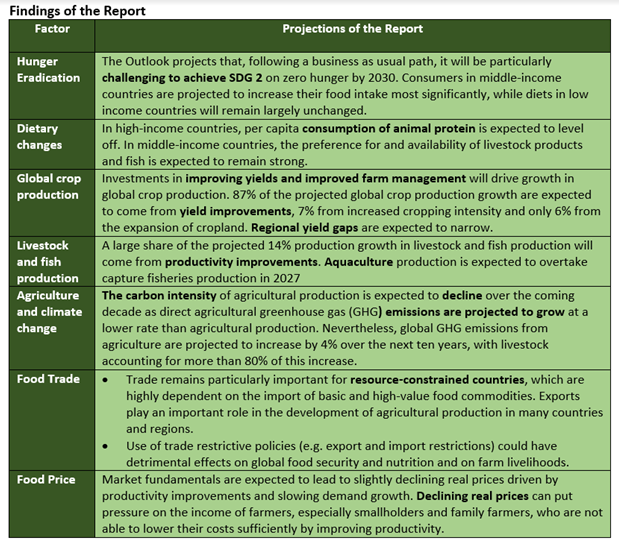Thursday, 15th July 2021
Livestock schemes to be merged under special livestock sector package
In News
The Cabinet Committee on Economic Affairs (CCEA) decided to merge a slew of schemes related to Livestock sector into three main programmes, focused on indigenous cows and dairy development, livestock health, and infrastructure development.
Details of the special livestock sector package
All schemes of the Department of Animal Husbandry and Dairying will be merged into three broad categories. These are
- Development Programmes which include Rashtriya Gokul Mission, National Programme for Dairy Development (NPDD), National Livestock Mission (NLM) and Livestock Census and Integrated Sample Survey (LC & ISS) as sub-schemes.
- Disease Control programme renamed as Livestock Health and Disease Control (LH & DC) which includes the present LH & DC scheme and National Animal Disease Control Programme (NADCP).
- Infrastructure Development Fund wherein, the Animal Husbandry Infrastructure Development fund (AHIDF) and the Dairy Infrastructure Development Fund (DIDF) are merged. The present scheme for support to Dairy Cooperatives and Farmer Producer Organizations engaged in Dairy activities is also included in this category.
Significance of special livestock sector package
- Making animal husbandry more remunerative: This Special livestock sector will be implemented for next 5 years starting from 2021-22 to further boost growth in livestock sector and thereby making animal husbandry more remunerative to 10 crore farmers engaged in Animal Husbandry Sector.
- Financial Implication: This package envisages Central Government's support amounting to Rs.9800 crore over duration of 5 years.
- Leverage external investment in livestock sector: It seeks to leverage total investment of Rs.54,618 crore in livestock sector including share of investments by State Governments, State Cooperatives, Financial institutions, External funding agencies and other stakeholder.
- Impact/Objective of various sub schemes under special livestock sector package:
- The Rashtriya Gokul Mission will help in development and conservation of indigenous breeds and would also contribute in improving the economic condition of the rural poor.
- The NPDD scheme is targeted towards installation of about 8900 bulk milk coolers, thus providing benefit to more than 8 lakh milk producers and 20 LLPD milk will be additionally procured. Under NPDD, financial assistance from Japan International Cooperation Agency (JICA) will be availed thus strengthening and creating fresh infrastructure in 4500 villages.
- LH&DC Scheme is a Centrally Sponsored Scheme which supplements the efforts of the States/UTs in development of animal husbandry by providing financial assistance as Central share for control & containment of animal diseases economic importance e.g., Foot and Mouth Disease (FMD), Brucellosis, Anthrax etc.
- AHIDF has been approved under AtmaNirbhar Bharat Abhiyan with a corpus of Rs. 15000 crore for incentivizing investments by individual entrepreneurs, private companies, MSME, Farmers Producers Organizations (FPOs) and Section 8 companies to establish (i) the dairy processing and value addition infrastructure, (ii) meat processing and value addition infrastructure and (iii) Animal Feed Plant.
Sources:
CEOS COAST
In News
A multinational project, co-led by ISRO and National Oceanic and Atmospheric Administration (NOAA) from the US, has been recently endorsed by a UN body for its use of innovative technology, and for fostering trust and collaboration among scientists.
About the Project
- Aim of the Project: The project called Committee on Earth Observation Satellites—Coastal Observations, Applications, Services, and Tools (CEOS COAST), aims to improve the accuracy of coastal data based on satellite and land-based observations.
- The project was recently endorsed by the International Oceanographic Commission (IOC) as an initial Action of the United Nation’s Ocean Decade plan that will span from 2021–2030.
- Themes of the Project: The themes of these projects include disaster risk reduction and coastal resilience among continental shorelines and small island nations. Work of the project will improve the way we study effect of the sea on land, such as in large-scale flooding events, as well as how land usage affects coastal ecosystems, water quality issues and the root causes of coastal runoff and sediment deposits.
- Significance of the Project: The project is an effort towards providing new and improved scientific/technical capabilities and building capacity for a more robust, end-to-end value chain (observations to data to products to information to actionable knowledge) in support of coastal stakeholders and global sustainable development.
United Nations Decade of Ocean Science for Sustainable Development

Source:
Picture source:
SC upheld the authority of Delhi assembly's peace and harmony committee
In News: Recently, Supreme Court upheld the authority of Delhi Assembly’s Peace and Harmony Committee to summon Facebook India’s senior official in connection with the February 2020 communal violence.
The issue
- The Committee - which is probing Facebook’s alleged role in spreading hate speech- issued notice to Facebook’s senior official, seeking his presence before it in connection with the February 2020 communal violence.
What is Facebook’s argument?
- Facebook argues that Delhi Assembly had no authority on Peace and Harmony Committee, as Delhi’s law and order and police came under the central government.
- Facebook also pointed out that it was governed by the IT Act of Parliament, hence State government has no role with it.
Supreme court’s ruling
- Rejected Facebook’s abstention by stating, The Delhi Assembly’s Peace and Harmony Committee has the power to ‘compel attendance’ by initiating privileges against Facebook officials.
- The Delhi Assembly had relied on various entries in the state list and concurrent list, by which the Delhi Assembly derived its power to discuss and debate on the issue in question.
- The Assembly does not only perform the function of legislating; there are many other aspects- “inquisitorial” and “recommendatory” powers of the house- of governance which can form part of the essential functions of the Legislative Assembly and consequently the Committee.
- On the competence of the committee, the court called it as “informed deliberation” by the Assembly’s elected representatives as the best measures to combat online mass hate and violence in their jurisdiction.
Social presence of facebook
- Facebook today has influence over 1/3rd population of this planet.
- 270 million registered users in India. The width of such access cannot be without responsibility as these platforms have become power centres themselves, having the ability to influence vast sections of opinions.
- Moreover, Facebook gains popularity and generates income through all kinds of social media posts.
- Thus, it becomes mandatory duty of Facebook to ensure self-regulation in generating, controlling or modulation of information.
Sources:
- The power of scrutiny: SC verdict on Delhi Assembly’s Committee on peace and harmony
- Delhi Assembly peace and harmony committee can summon Facebook: Supreme Court
- Entities like Facebook have to remain accountable, says SC; upholds Delhi Assembly's right to summon
- SC backs summons to FB from Delhi govt.riots panel
Ethics & Governance of Artificial Intelligence for Health
In News
The World Health Organisation (WHO) has released its report ‘Ethics & Governance of Artificial Intelligence for Health’.

Application of AI for Health
An AI system is a machine-based system that can, for a given set of human-defined objectives, make predictions, recommendations, or decisions influencing real or virtual environments. AI systems are designed to operate with varying levels of autonomy.
Ethical challenges and risks with the use of artificial intelligence of health
- Assessing utility of artificial intelligence: Enduring appeal of “technological solutionism”, in which technologies such as AI are used as a “magic bullet” to remove deeper social, structural, economic and institutional barriers, can result in an unbalanced health-care policy and misguided investments by countries. It can also divert attention and resources from proven but underfunded interventions.
- Artificial intelligence and the digital divide: Countries like India, have both world-class digital infrastructure and millions of people without electricity. One challenge that could affect the uptake of AI is the “digital divide”, which refers to uneven distribution of access to, use of or effect of ICT among any number of distinct groups.
- Data collection and use: One concern with health data is their quality and safety of individual privacy. AI can also lead to Data colonialism, where data is used for commercial or non-commercial purposes without due respect for consent, privacy or autonomy.
- Accountability and responsibility with AI: Certain characteristics of AI technologies like their opacity, discretion, scalability, capacity to generate hidden insights and the complexity of the software, can affect notions of responsibility. This enhances the cyber-security concerns.
- Impacts of artificial intelligence on labour and employment in health and medicine: AI has the potential to augment and possibly replace the daily tasks of health-care workers and physicians. “Uberization” of health care, in which AI facilitates the creation of health-care platforms on which nurses, physician assistants and even doctors, work on demand, can sever relationships between patients and health-care givers.
Frameworks that should guide the laws and policies for the use of AI for health
- Artificial intelligence and human rights: AI and big data can improve the human right to health when new technologies are designed in an accountable manner. The Toronto Declaration addresses the impact of AI on human rights and situates AI within the universally binding, actionable framework of human rights laws and standards.
- Data protection: Data protection laws are “rights-based approaches” that provide standards for regulating data processing that both protect the rights of individuals and establish obligations for data controllers and processors. One such law is the General Data Protection Regulation (GDPR) of the European Union (EU).
- Ethical Principles for use of AI in health: No specific ethical principles for use of AI for health have yet been proposed for adoption worldwide. Astana Declaration, which includes principles for the use of digital technology.
- Regulatory considerations: Regulation of AI technologies can be based on documentation and transparency, risk management and the life-cycle approach, data quality, analytical and clinical validation, engagement and collaboration, and privacy and data protection.
Key ethical principles for the use of AI for health by WHO

Way Forward
AI for health is a fast-moving, evolving field, and many applications, not yet envisaged, will emerge with ever-greater public and private investment. So, responsibilities and accountability can be shared among the following, to ensure a safe future if AI in Health:
- Stakeholder responsibility: Various stakeholders can introduce ethical practices, programmes, and measures to anticipate or meet ethical norms and legal obligations. Example: ethical, transparent design of AI technologies; trustworthiness between providers and patients; impact assessment; and a research agenda for ethical use of AI for health care.
- Liability Regime: Liability could be assigned to a health-care provider, a technology provider and a health-care system or hospital that selects an AI technology and how the rules of liability might influence how a practitioner uses AI.
- Governance in Health: It can be ensured through mechanisms like governance of data, control and benefit-sharing, governance of the private and public sector, regulatory considerations and model legislation and global governance of AI.
Question: Analyse the ethical challenges with reference to the use of artificial intelligence in health sector? Highlight the principles which can guide this sector beyond such challenges.
Source:
This Day in History- Jamsetjee Jeejeebhoy
On 15th July 1783, Jamsetjee Jeejeebhoy was born in Mumbai. Sir Jamsetjee Jeejeebhoy was an Indian merchant, industrialist, and philanthropist. In 1834, he became one of the first Indians appointed as Justice of the Peace, which was a position in the Court of Petty Sessions, the de facto municipal authority. In 1842, he became the first Indian to be knighted, officially receiving a Sir added to his name. He founded the Sir JJ School of Art and the JJ Hospital. In 1857, Queen Victoria named him the first Baronet of Bombay.

Sources:
Image of the Day -The Great Salk Lake
Both the images are of the Great Salt Lake, in Utah, USA. The one on the left is the current photograph and one on the right is the photograph from the year 1933. It is the largest natural lake west of the Mississippi River, plunging to historic low levels as the region suffers through a vast and relentless mega drought due to climate change and overuse of the freshwater streams and rivers that feed into the lake. The receding water has already affected pelican nesting, exposure of arsenic-laden dust in air and movement of sailboats.

Sources:
National Maritime Security Coordinator (NMSC)
- Context: Two decades after the Kargil Group of Ministers' recommendation, the Centre is set to appoint a NMSC.
- The NMSC will act as an interface between the civilian and military maritime domain with the objective of enhancing security architecture and energy security of India.
- It will work under Indian National Security Advisor and be the principal advisor to the government on maritime security domain.
- The appointment of NMSC fills the need of the hour as the Navy, Coast Guard and state maritime boards all tend to work in silos with overlapping jurisdictions and are constantly at odds with each other.
- The creation of NMSC is part of India’s Act East Policy, SAGAR (Security and Growth of All in the Region), Deep Ocean Mission and the Sagarmala project to make India’s 12 major ports into world class standard.

Source:
Picture source:
First Green Hydrogen Mobility Project
- Context: NTPC Renewable Energy Ltd (REL) has signed a MoU with Ladakh to set up India’s first green hydrogen mobility project in the region.
- NTPC plans to ply five hydrogen buses, set up a solar plant (solar trees and solar carport) and a green hydrogen generation unit in Leh with which Leh becomes the first city in the country to implement a green hydrogen-based mobility project.
- The project will help Ladakh develop a carbon-free economy based on renewable sources and green hydrogen.
- This is in line with the vision of a “carbon neutral” Ladakh.
- Green hydrogen is hydrogen produced from electrolysis (splitting of water into oxygen and hydrogen) by passing electricity from renewable sources resulting in no carbon emissions.

Source:
- NTPC REL to set up India’s first green Hydrogen Mobility project in Ladakh
- NTPC renewable arm to set up India’s first green hydrogen mobility project in Leh
Picture Source:
BHIM-UPI
- Context: National Payment Corporation of India’s arm, NPCI International Payments Ltd. (NIPL) has partnered Royal Monetary Authority (RMA) of Bhutan for implementing BHIM UPI in Bhutan.
- Bharat Interface for Money (BHIM), developed by National Payment Corporation of India (NPCI), is an initiative to enable fast, secure, reliable cashless payments through mobile phones.
- It is based on Unified Payment Interface (UPI) to facilitate e-payments directly through banks.
- It is interoperable with other Unified Payment Interface (UPI) applications, and bank accounts.
- Unified Payment Interface (UPI) is an instant payment system built over the Immediate Payment Service (IMPS) infrastructure that allows instant transfer of money between any two parties’ bank accounts.
- With this effort, Bhutan becomes the first country to adopt UPI standards for its Quick Response (QR) deployment and the only country to both issue and accept RuPay cards as well as accept BHIM UPI.

Source:
Picture Source:
Few-Electron Bubbles (FEBs) in Superfluid Helium Gas
- existence of two species of few electron bubbles (FEBs) in superfluid helium for the first time.
- An electron bubble is the empty space created around a free electron in a cryogenic gas or liquid, such as neon or helium. They are typically very small, about 2 nm in diameter at atmospheric pressure.
- An electron injected into a superfluid form of helium creates a Single Electron Bubble (SEB)- a cavity that is free of helium atoms and contains only the electron. The shape of the bubble depends on the energy state of the electron.
- FEBs are nanometre-sized cavities in liquid helium containing a handful of free electrons.The number, state, and interactions between free electrons dictate the physical and chemical properties of materials.
- Studying these properties can help scientists understand superconductivity and develop next generation quantum material.
Source:
Women work more, earn less, and face greater health risks-HT
Essence: According to recent study conducted to analyze socio-economic impact of Covid-19 on women in low-income households, it was found that women are more affected than men by employment issues, health indicators. Survey further reveals concerning figures regarding women from historically marginalized groups who were more affected than the average women. Government welfare schemes and SHGs played an important role in helping them navigate this pandemic. Article further suggests measures which could prove transformational in the long-term recovery and health of our economy and society.
Why should you read this article?
- To get an overview of socio-economic impact of pandemic on women.
- To understand how government welfare programs helping them navigate the pandemic.
- To know what measures should be taken to tackle women’s issues.
Source:
A healthcare system that prioritises treatments over outcomes, is not really centred on patients’ wellbeing-ToI
Essence: The World Economic Forum has suggested that India will have had an economic loss of $4.6 trillion due to NCDs between 2012-30. It is very telling that 80% of deaths in India from Covid have occurred in those already suffering non-communicable diseases (NCDs) like diabetes. This article analyses the current and traditional healthcare model and suggests improvements.
Why you should read this article?
- Know about the major drawbacks of present healthcare system such as conflict of interest, lack of incentives on disease prevention, unnecessary costs, etc.
- Identify the steps which can transform Indian healthcare system such as Proactive doctors, Integration of Outcomes, and Insurance.
Source:
Afforestation via Seed Bombing: Awareness drive in Assam
Background
- Trees play a crucial role in maintaining balance in the ecosystem. But modernisation, urbanisation and population expansion have led to deforestation.
- Afforestation is the need of the hour to tackle climate change and other associated hazards.
- In Assam, awareness drive of this technique is being held to create awareness among students and common public in Kokrajhar
What is seed bombing:
- It is a technique of planting trees by embedding organic seed balls in the ground. It is also known as aerial reforestation.
- Vegetation can be introduced in any land by throwing or dropping seed balls in the ground. The best time to execute this process is rainy season.
Advantages:
- Apt for rugged location: It is best suited to sites whose remoteness, ruggedness, inaccessibility, or sparse population makes seedling planting difficult.
- Huge success rate: Seeds planted through this procedure have a success rate of 50%.
Source:
Share the article
Get Latest Updates on Offers, Event dates, and free Mentorship sessions.

Get in touch with our Expert Academic Counsellors 👋
FAQs
UPSC Daily Current Affairs focuses on learning current events on a daily basis. An aspirant needs to study regular and updated information about current events, news, and relevant topics that are important for UPSC aspirants. It covers national and international affairs, government policies, socio-economic issues, science and technology advancements, and more.
UPSC Daily Current Affairs provides aspirants with a concise and comprehensive overview of the latest happenings and developments across various fields. It helps aspirants stay updated with current affairs and provides them with valuable insights and analysis, which are essential for answering questions in the UPSC examinations. It enhances their knowledge, analytical skills, and ability to connect current affairs with the UPSC syllabus.
UPSC Daily Current Affairs covers a wide range of topics, including politics, economics, science and technology, environment, social issues, governance, international relations, and more. It offers news summaries, in-depth analyses, editorials, opinion pieces, and relevant study materials. It also provides practice questions and quizzes to help aspirants test their understanding of current affairs.
Edukemy's UPSC Daily Current Affairs can be accessed through:
- UPSC Daily Current Affairs can be accessed through Current Affairs tab at the top of the Main Page of Edukemy.
- Edukemy Mobile app: The Daily Current Affairs can also be access through Edukemy Mobile App.
- Social media: Follow Edukemy’s official social media accounts or pages that provide UPSC Daily Current Affairs updates, including Facebook, Twitter, or Telegram channels.





